Reviews
William F. Claxton
USA, 1972
Credits
Review by Megan Weireter
Posted on 27 October 2007
Source Warner Home Video DVD
Categories 31 Days of Horror
I’m not much of an animal person. I’ve never had a pet, and I prefer to think of rabbits as food more than anything else. So I appreciate the unsentimental approach to animals that pervades the southwestern culture where Night of the Lepus is set. Out here, rugged men battle the elements to raise cattle, and any creature that gets in the way is an economic hardship. Rabbits may or may not be cute, but they’re a menace out here, where their burgeoning population and tendency to ravage all flora is endangering cattle and, indeed, the entire local ecosystem. We’re treated to opening shots of farmers shooting rabbits willy-nilly as they run wild over the land. And you get the feeling that, if only the rabbits were big enough to do something about it, they would have their revenge.
Maybe that’s what the filmmakers were thinking when they decided to make a horror film about giant mutant killer bunny rabbits. Or maybe they did it on a dare. Either is plausible.
When rancher Cole Hillman hires Roy Bennett, a zoologist, to help him control the rabbits ravaging his land, Roy naturally decides to try out some of his cutting-edge genetic technologies, basically messing with the rabbits’ genes to try to slow down their breeding. Roy Bennett is a guy with earnest eyebrows and a knack for ordering people around. He maintains an admirable stoicism in the face of adversity, as well as a remarkable bone-headedness. After running into problems while trying to solve this rabbit problem, it seems he’ll try almost anything, including obtaining an unknown serum from a random guy in the public health office. “Gee, I wish I knew what the effects of this serum would be,” he says casually as he injects a rabbit with it. Of course, we know what the effects will be! (And let’s all hope we never hear these words from a doctor giving us a shot.)
Roy has laboratory help from his devoted wife, Jerri, and his daughter, Amanda, who hangs around the lab and plays with the rabbits, which I’m sure is perfectly acceptable in scientific studies. Amanda, acting in a long tradition of headache-inducingly annoying children in horror movies, not only whines and pouts her way through the film, but also turns out to be the cause of the problem. She rescues her favorite rabbit, who unfortunately has already been treated with Roy’s mysterious serum, and carelessly lets it run away and spread its altered genetic material. This will soon result in an infestation of rabbits the size of wolves who are very, very angry at humanity.1 Luckily, there is cosmic retribution, as Amanda is the first victim of rabbit attack that we get to witness. Unfortunately, she doesn’t die.2 But lots of other people do. The rabbits seem to kill by mauling and gnawing, leaving bodies with a lot of superficial wounds and blood everywhere. And they’re breeding like crazy—like rabbits, in fact! What will the townspeople do?
Night of the Lepus is one of those movies in which a fabulous premise is realized in exactly the wrong way. A few major problems prevent us from having too much fun with this. For one, there’s not one single instance of anyone saying, “Giant killer rabbits? That’s crazy talk!” Understand that when the scientists explain the situation to the townspeople and cops, they are always believed. Sure, the forensic scientists say that the bites of the victims don’t match any normal local creatures, but it’s still a big leap from that bit of mysteriousness to obvious death-by-killer-rabbit, and I have a hard time dealing with the townspeoples’ lack of skepticism. When an entire drive-in theatre has to be evacuated because the rabbits are about to stampede through, a policeman with a bullhorn actually stands in front of the cars and says “Attention! There is a herd of killer rabbits headed this way and we desperately need your help.”3 And no one even blinks.
Without all the fun of watching skeptics getting their heads chewed off, the whole thing devolves from potentially promising horror film into a cross between a mediocre police drama and a worse disaster movie. But what fine policework! We’re subjected to a whole crew of policemen, and even a couple National Guard officers, acting soberly, rationally, and untiringly in the face of the killer mutant bunny attack. There are maps with pins in them, there are roadblocks, there are countless conversations over the radio involving the word “over,” and lots of other tedious details. I honestly don’t even think anyone raises his or her voice. This all makes the last half pretty unbearable, so by the time the potentially awesome plan to stop the rabbits is put into action, the suspense has been entirely deflated.
And finally, even if everything else had gone exactly right, there is simply no way to make real rabbits look scary. I don’t like to criticize a film for cheap-looking effects—they’re usually cheap-looking because the filmmakers were getting creative on a small budget, and the last thing I want to do is hold a small budget against anyone. In fact, the effects here aren’t bad. The slow-motion running of the rabbits as they chase the humans out of their gigantic burrow, set to a dynamic drumbeat, is really something to see. They tear their way through miniature sets leaving trails of destruction behind them, and when they’re in closeup, they have human blood smeared all over their cute little fidgety faces. And that’s the problem—there’s nothing the filmmakers could do to make the rabbits actually look scary. They maintain that befuddled look in their eyes, that rabbity twitch in their noses, that’s so familiar to rabbit-lovers the world over. They just don’t look particularly carnivorous—and it makes the attack scenes pretty surreal. Actually, maybe I’m making this sound worse than it is—it’s at least pretty funny.
But before we chortle ourselves into complacency, let’s remember that Night of the Lepus is a movie with a message—an environmental horror film. After all, the infestation of rabbits takes place only because the ranchers have shot all the coyotes. Just for background, we’re also shown helpful footage of how disastrous the introduction of rabbits to the Australian outback was. If people would only make sure to maintain the balance within the ecosystem and let predators and prey control each other’s populations the way that nature intended, none of the disastrous giant rabbit-induced carnage would have happened. What’s sad is that the humans are so well-meaning. Roy embarks upon his crazy genetic mutation plan because he knows that using poison will result in environmental devastation. But as in so many cases, nature makes mankind’s attempts to control it look foolish. Night of the Lepus could have seemed timeless, even prescient, if it wasn’t so silly.
^1^ How many horror movie premises are dependent on animal lovers freeing animals that should never have been freed? See, all that sentimental attachment ever resulted in was trouble. ↩
^2^ I swear I am not an advocate of the murder of children, even annoying ones. I maintain that children like Amanda, and most of the other children that populate films and television shows, are not human children at all, but evil cyborgs from the planet of Market Testing. ↩
^3^ The correct term for a group of rabbits is actually “bury”: “a bury of killer rabbits.” I looked it up. ↩
More 31 Days of Horror
-

Alien
1979 -
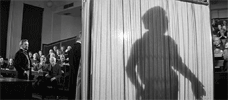
The Elephant Man
1980 -

My Bloody Valentine
1981 -

Who Can Kill a Child?
1976 -
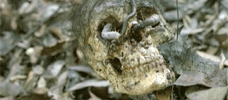
Cannibal Holocaust
1980 -
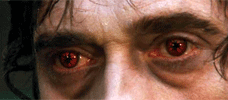
Let Sleeping Corpses Lie
1974 -

John Carpenter’s Vampires
1998 -

Jaws 2
1978 -

A Warning to the Curious
1972 -

Wolf
1994 -

The Survivor
1981 -
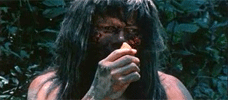
Cannibal Ferox
1981 -
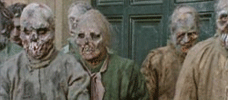
The Nights of Terror
1981 -
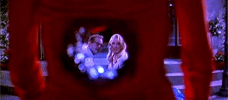
Death Becomes Her
1992 -

Alice, Sweet Alice
1976 -

Body Double
1984 -
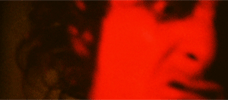
Invocation of My Demon Brother
1969 -
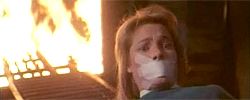
Phantasm II
1988 -

Emanuelle and the Last Cannibals
1977 -

The Wicker Man
1973 -

Maniac Cop
1988 -
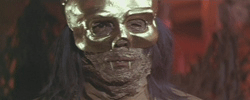
The Legend of the 7 Golden Vampires
1974 -
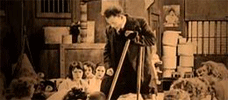
The Penalty
1920 -

Boxing Helena
1993 -

Chew on This
2005 -

Night of the Creeps
1986 -
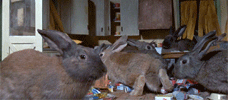
Night of the Lepus
1972 -
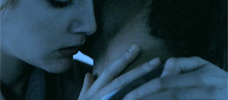
Near Dark
1987 -

Army of Darkness
1992 -
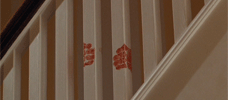
The Brood
1979 -

The Lift
1983 -

Amsterdamned
1988 -
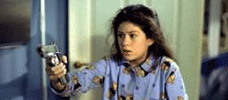
Silent Witness
1999 -

The Shaft
2001
We don’t do comments anymore, but you may contact us here or find us on Twitter or Facebook.



